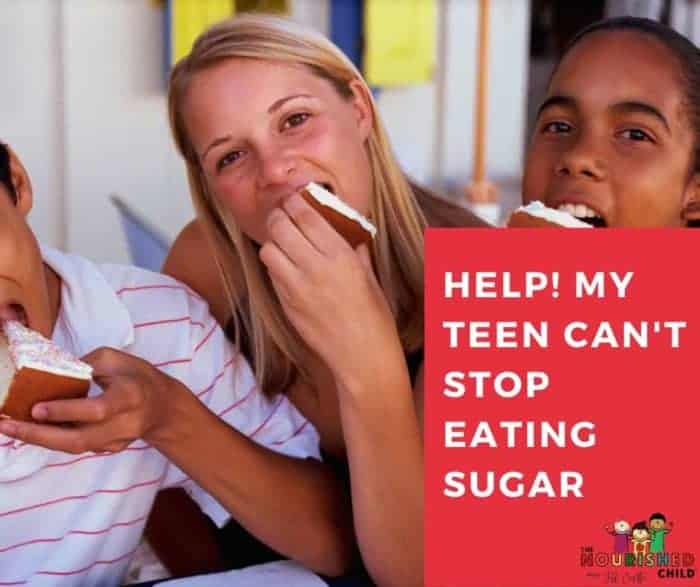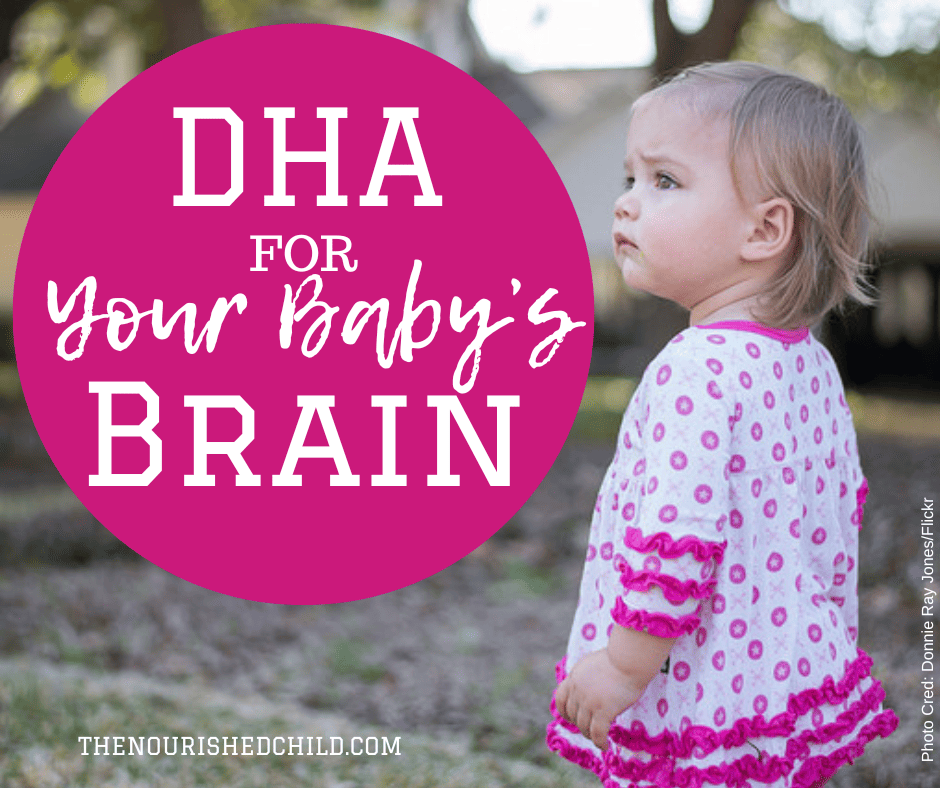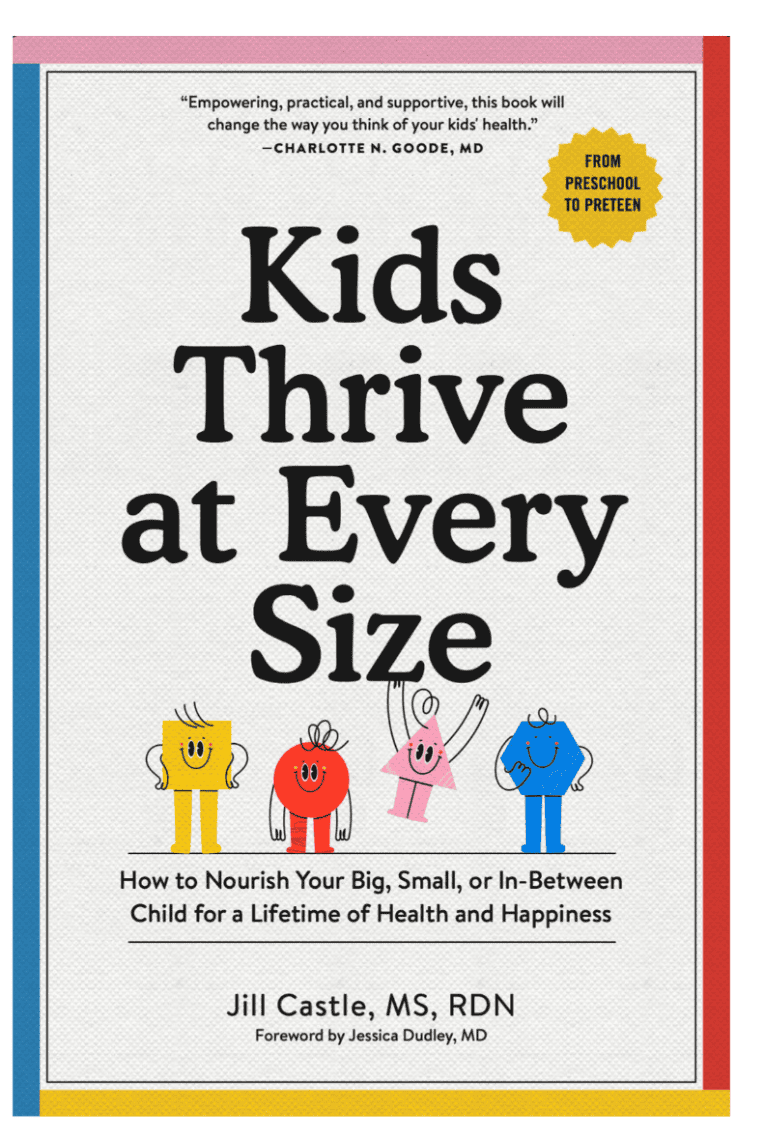Vitamin E for Kids: Health Benefits, How Much, and Safety
December 27, 2023
Learn about the vitamin E benefits for kids and which vitamin E rich foods you can include in meals and snacks.
Vitamin E is one of the fat-soluble vitamins and plays an important role in the growth and development of children.
Fortunately, vitamin E for kids is not a concern for most families.
However, making sure your child is optimally nourished will help prevent disease, enhance recovery from illness, and more.
The History of Vitamin E
When vitamin E was discovered in 1922, it was called the “fertility vitamin.”
Researchers found that lab rats fed a diet deficient in vitamin E became sterile and only regained their fertility after consuming vitamin E.
A few years after its discovery, vitamin E was scientifically named tocopherol from the Greek word tokos meaning childbirth, and phero meaning to bring forth.
Vitamin E was officially recognized for its role as an essential dietary substance in normal fetal development.
Interesting, huh?
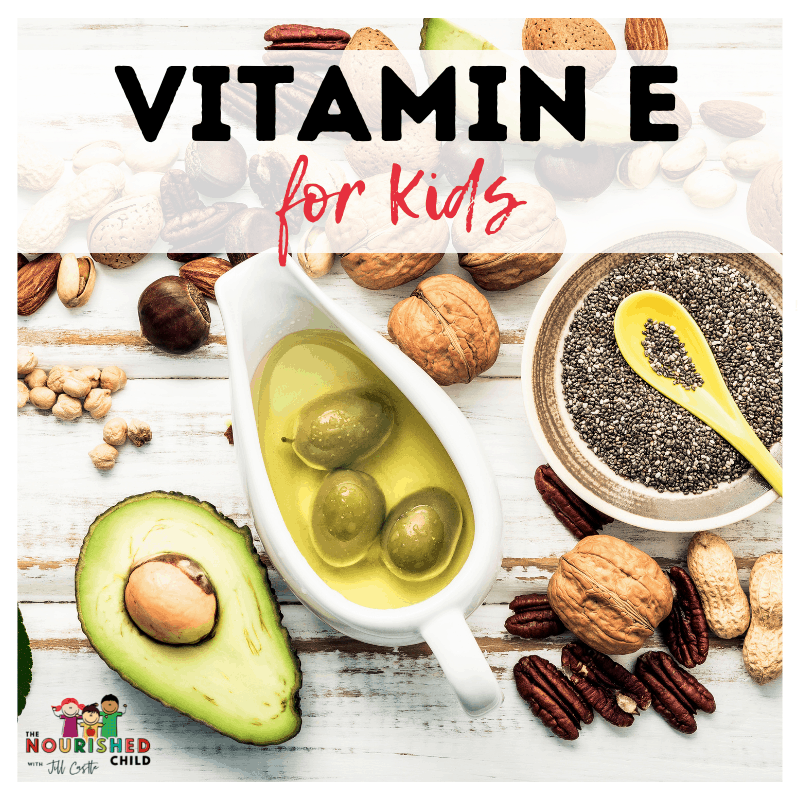
Alpha Tocopherols and Vitamin E
Even though its name makes it sound like a single substance, vitamin E is actually a family of essential vitamins that include both tocopherols and tocotrienols.
Naturally occurring vitamin E exists in eight chemical forms that have varying levels of biological activity.
Alpha-tocopherol is the only form of vitamin E that is recognized to meet requirements for the general population.
Vitamin E is a fat-soluble nutrient, like vitamin D, vitamin K, and vitamin A, which means it needs to be consumed with fat to be properly and optimally absorbed in the body.
What Does Vitamin E Do?
Vitamin E works as an antioxidant in the body.
Antioxidants are elements that protect cell membranes from the damage that comes from oxidative damage.
You may have seen advertisements for skin cream with vitamin E, touting its anti-aging effects and use of free radicals.
Free radicals have been linked to the onset of premature aging, cancer, cataracts, and many degenerative diseases, like macular degeneration which causes vision loss.
Furthermore, vitamin E is a powerful antioxidant that benefits the skin by protecting it from ultraviolet radiation. Use of vitamin E has also been shown to aid the immune system, helping curtail inflammatory responses and prevent infections.
What Happens When You Can’t Get Enough Vitamin E?
Inadequate vitamin E can cause neurological problems, such as nerve and muscle damage that can cause a loss of feeling in the arms and legs, poor body movement control, and muscle weakness.
Vision problems and a weak immune system may also be signs of vitamin E deficiency.
The good news?
Vitamin E deficiency is rare.
However, it does exist.
It’s seen in people who cannot absorb dietary fat, such as children with cystic fibrosis.
A deficiency of vitamin E has also been found in premature, very low birth weight infants, and occurs in those children and adults with rare disorders of fat metabolism.
Intake Recommendations of Vitamin E for Children
The Dietary Reference Intakes (DRI) for children are:
Recommended Dietary Allowances (RDAs) for Vitamin E (Alpha-Tocopherol) **
| Age | Males | Females | Pregnancy | Lactation |
| 0-6 months* | 4 mg (6 IU) | 4 mg (6 IU) | ||
| 7-12 months* | 5 mg (7.5 IU) | 5 mg (7.5 IU) | ||
| 1-3 years | 6 mg (9 IU) | 6 mg (9 IU) | ||
| 4-8 years | 7 mg (10.4 IU) | 7 mg (10.4 IU) | ||
| 9-13 years | 11 mg (16.4 IU) | 11 mg (16.4 IU) | ||
| 14+ years | 15 mg (22.4 IU) | 15 mg (22.4 IU) | 15 mg (22.4 IU) | 19 mg (28.4 IU) |
*Adequate Intake (AI)
**Adapted from The NIH Office of Dietary Supplements
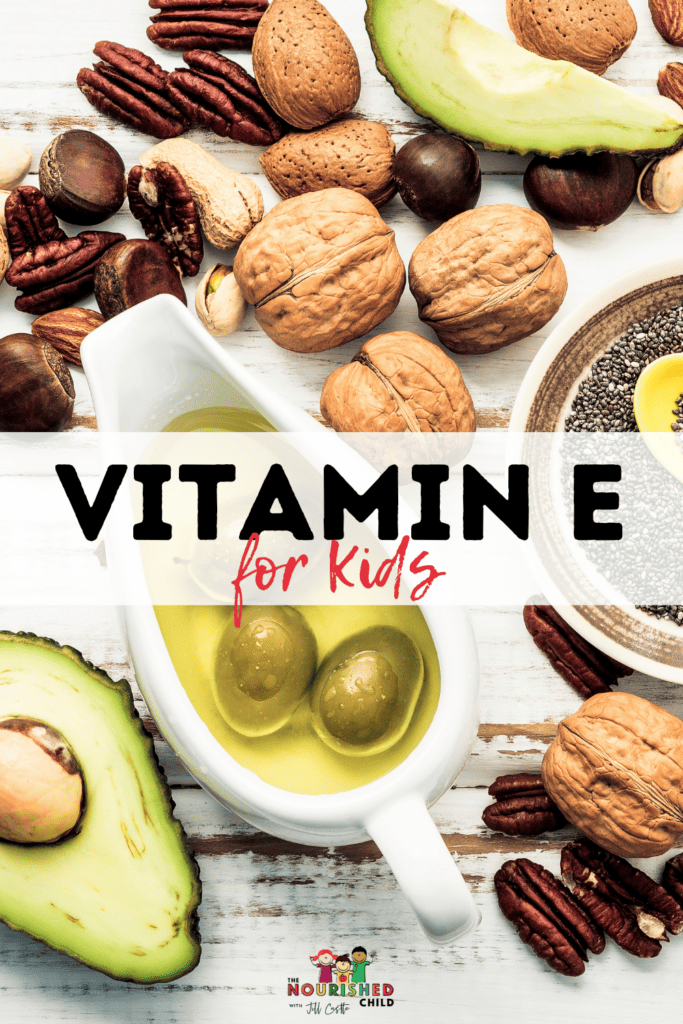
Foods High in Vitamin E
Wheat germ oil is the most abundant source of vitamin E.
Other good sources of vitamin E are nuts, sunflower seeds, vegetable oils, broccoli, peaches, salad dressings, whole grains, and cereals, to name a few.
Did you know that eating just 1 cup of raisin bran with 1 ounce of almonds meets 100% of the Daily Value for an adult or child 4 years of age and older?
Check out some of the foods that contain E:
Selected Vitamin E Foods (Alpha-Tocopherol) *
| Food | Milligrams (mg) per serving | Percent Daily Value (DV) |
| Wheat germ oil, 1 tablespoon | 20.3 | 100 |
| Almonds, dry roasted, 1 ounce | 7.4 | 40 |
| Sunflower seeds, dry roasted, 1 ounce | 6.0 | 30 |
| Sunflower oil, 1 tablespoon | 5.6 | 28 |
| Safflower oil, 1 tablespoon | 4.6 | 25 |
| Hazelnuts, dry roasted, 1 ounce | 4.3 | 22 |
| Peanut butter, 2 tablespoons | 2.9 | 15 |
| Peanuts, dry roasted, 1 ounce | 2.2 | 11 |
| Corn oil, 1 tablespoon | 1.9 | 10 |
| Spinach, boiled, ½ cup | 1.9 | 10 |
| Broccoli, chopped, boiled, ½ cup | 1.2 | 6 |
| Soybean oil, 1 tablespoon | 1.1 | 6 |
| Kiwifruit, 1 medium | 1.1 | 6 |
| Mango, sliced, ½ cup | 0.9 | 5 |
| Tomato, raw, 1 medium | 0.8 | 4 |
| Spinach, raw, 1 cup | 0.6 | 4 |
*Adapted from The NIH Office of Dietary Supplements
Is Vitamin E Supplementation for Kids Necessary?
Typically, a vitamin E supplement for kids is not necessary. Nutritional needs are typically met with current eating patterns.
However, most multivitamins for children do contain a source of vitamin E.
Can Vitamin E Be Toxic for Kids?
Research shows it is unlikely to experience toxicity from vitamin E when it’s eaten in food form alone.
However, vitamin E supplements taken in very high dosages have been shown to have toxic effects, like hemorrhaging.
The Tolerable Upper Intake Level (UL) for Vitamin E applies to supplemental vitamin E only, so unless a child is taking vitamin E supplements, there is generally no need to worry about overdosing or toxicity issues.
In other words, it’s generally accepted that you cannot get too much vitamin E if you get this essential nutrient from food.
This rings true for most nutrients: Food is the best and safest source of nutrients.
Tolerable Upper Intake Levels (ULs) for Vitamin E in Children*
| Age | Male | Female | Pregnancy | Lactation |
| 1-3 years | 200 mg (300 IU) | 200 mg (300 IU) | ||
| 4-8 years | 300 mg (450 IU) | 300 mg (450 IU) | ||
| 9-13 years | 600 mg (900 IU) | 600 mg (900 IU) | ||
| 14-18 years | 800 mg (1,200 IU) | 800 mg (1,200 IU) | 800 mg (1,200 IU) | 800 mg (1,200 IU) |
*Adapted from The NIH Office of Dietary Supplements
Bottom Line: Every child needs Vitamin E.
A balanced diet is likely to supply an adequate intake of vitamin E. The benefits outweigh the drawbacks, especially if you focus on vitamin E foods.
If your child is taking a multivitamin supplement with E, I advise sticking with the Recommended Dietary Allowance for the age of your child, which is usually listed on the package.
How do you include Vitamin E in your child’s diet?
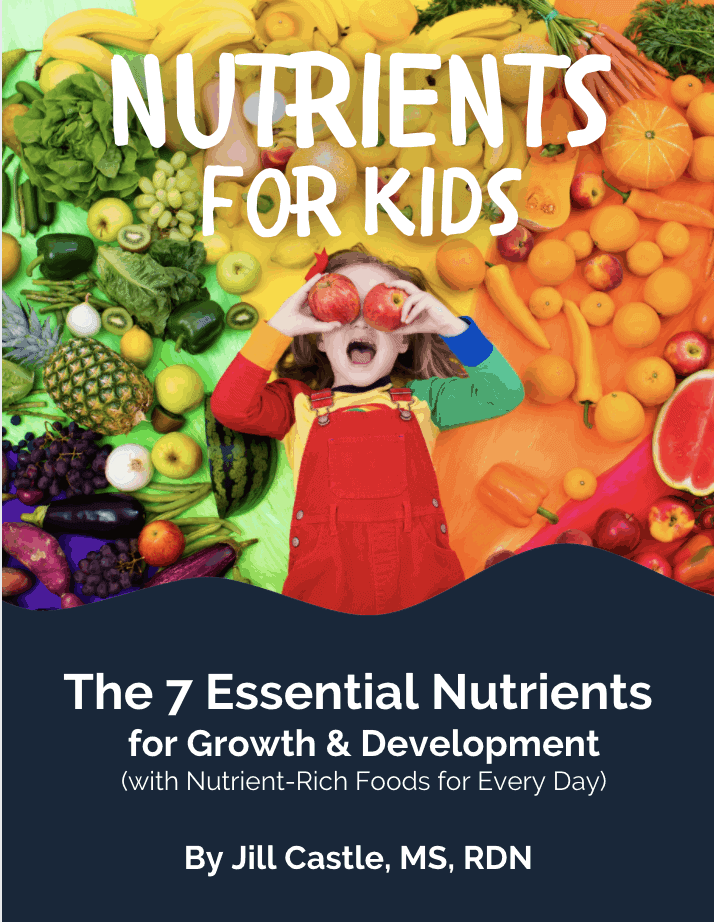
Learn my super-simple way to make sure kids are getting the nutrients they need!
Need More Help with Nourishing Your Child?
Check out my workshops, classes and guidebooks like The Nourished Child Blueprint which will give you the fundamentals of nourishing your child, inside and out.
This post has been updated in December 2023 from its original version.

Jill Castle, MS, RD
I like empowering parents to help their children and teens thrive at every size with realistic advice centered on healthful habits around food, feeding, nutrition and health behaviors. As a pediatric dietitian and author, my goal is to share strategies and realistic advice to help you raise a healthy and happy child through my articles and podcast.

